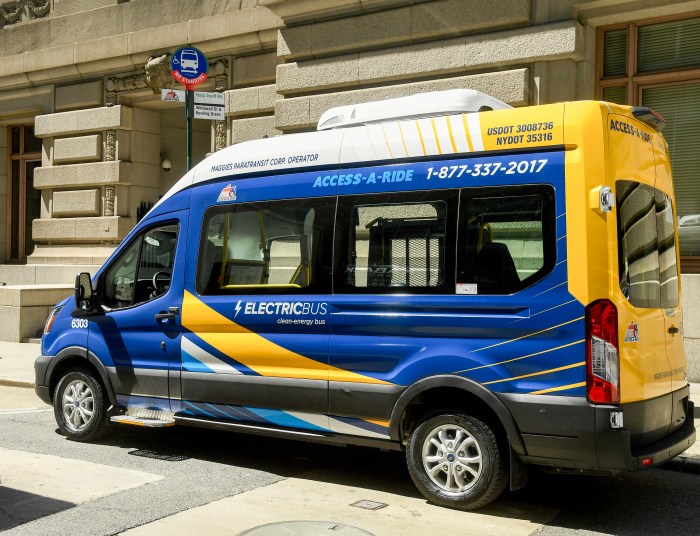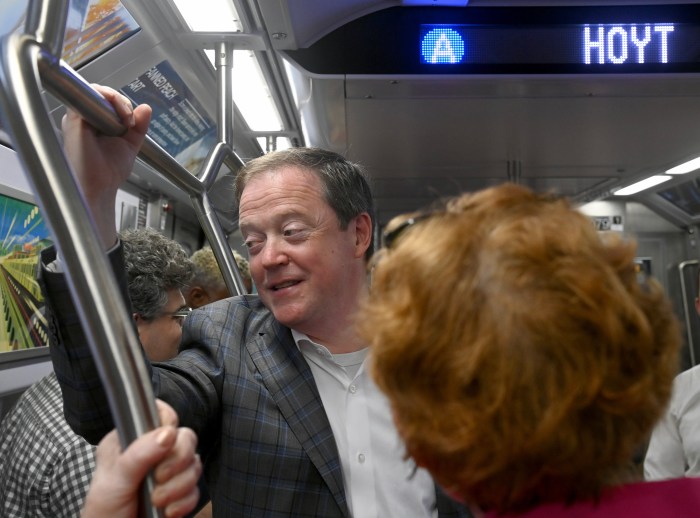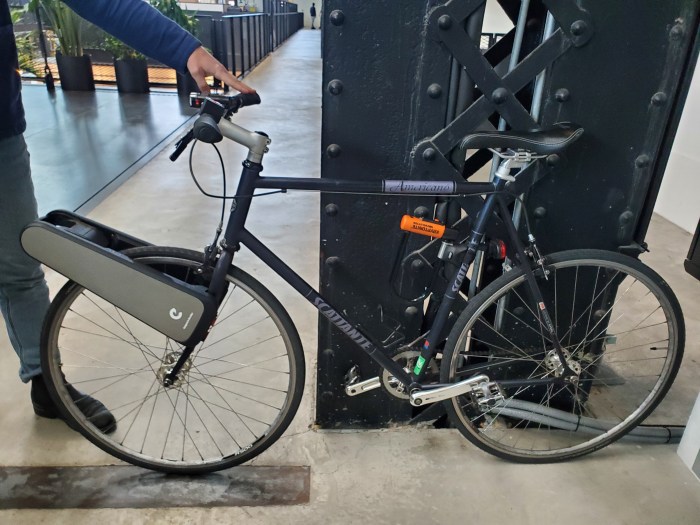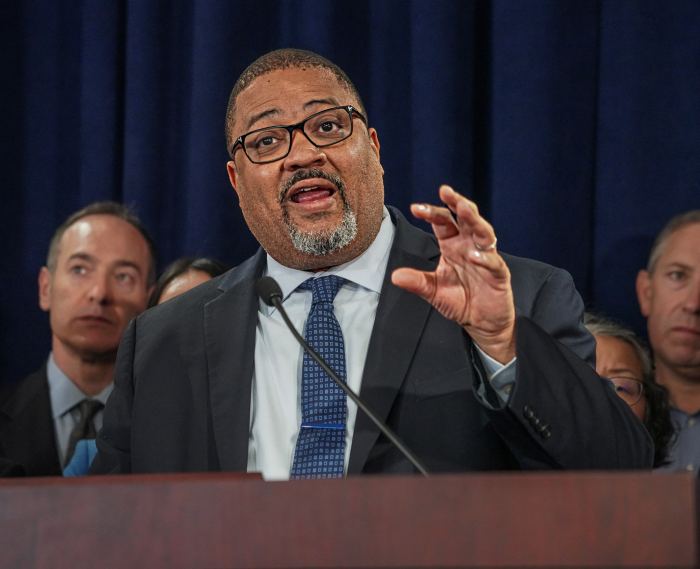
It’s good news, bad news at the MTA.
Subway service continues to steadily improve, though a big budget gap at the authority could bring service cuts in the coming months, transit officials warned Thursday.
The subways in August were as reliable as they’ve been in six years, according to new MTA data. Weekday on-time performance, which measures the portion of trains arriving at their terminals within five minutes of their schedule, hit 84% that month — up from 69% last August.
At the same time, weekday delays fell by 52% when you compare this past August to the same month last year — a drop from roughly 60,000 to 30,000.
“The data speaks for itself. It reflects sustained objective improvement in the everyday subway experience of our riders,” said NYC Transit President Andy Byford, who touted the figures at Fulton Center on Thursday with subway workers behind him.
While Byford admits there’s much more to be done to provide quality service, the biggest improvement appears to stem from his Save Safe Seconds Campaign, which focuses on operational organization — his “basics.” Byford and his team have reviewed speed limits, increasing speeds for trains at 150 locations. They have identified 400 faulty signal timers that likely artificially slowed train service for years.
The gains, however noticeable, come at a critical time at the authority. The MTA is attempting to complete a difficult agency reorganization to stave off its budget woes. The restructuring, as proposed by the outside firm AlixPartners, would push back by a year a $1 billion gap in its operating budget — the MTA’s ledger for day-to-day costs — to 2023.
Byford stressed that his agency will “look at every possible way” to avoid service cuts.
“Having said that, I’m not going to sugarcoat this. We do face a real financial challenge in the short- to medium-terms in terms of operating expenditure,” he added.
At the same time, the MTA has pieced together a yet-to-be-seen capital program, a roughly $50 billion package outlining spending for large-scale projects to improve service across the network over the next five years. Transit advocates hope the plan will fully fund Byford’s Fast Forward vision to modernize the subway’s signal system and add elevators to 50 new stations.
They’ve also pushed for greater transparency and accountability around the plan to make sure spending is happening on time and on budget — a challenge at the MTA.
The Riders Alliance on Thursday presented the office of Gov. Andrew Cuomo, who effectively controls the MTA, with the results of its straphanger survey and recommendations for the MTA’s next capital plan, emphasizing more funding for subway signals and station repairs.
“Riders deserve to have that money help them. They need to have that money help them,” said the Riders Alliance’s Rebecca Bailin.
Byford said Thursday that he and the governor are “on the same page” regarding the capital plan.
“We are on the cusp at the MTA on achieving a fully funded capital program,” Byford said, “and one that will focus on the key deliverables that Fast Forward sets out — namely, resignaling; making the subway fully accessible; provision of new vehicles — and through them fundamentally better service.”

















